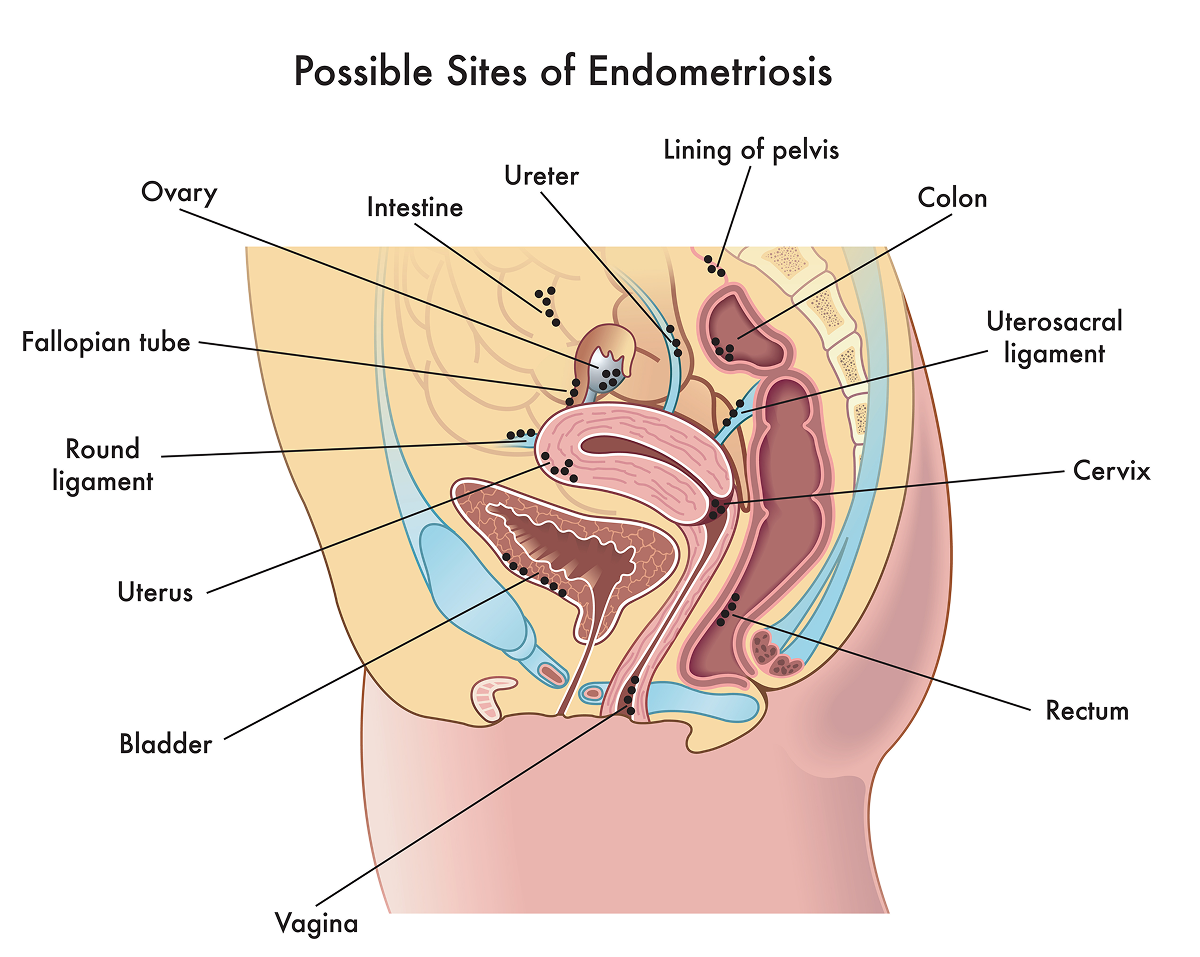Endometriosis
Schedule an appointmentEndometriosis is a progressive disease that may cause chronic pain in the lower abdomen. It’s one of the most common gynecological diseases.
What kind of pain does endometriosis cause?
Endometriosis pain can be constant and extreme enough to affect your daily life. For some people, it happens mostly during their menstrual cycle – causing severe cramps and pain.
Pain from endometriosis is centered in the lower abdomen and may also happen during bowel movements, urination or sexual intercourse.
Other endometriosis symptoms
In addition to the pain of endometriosis, you may also experience:
- Premenstrual spotting or bleeding between periods
- Heavy menstrual periods
- Fatigue and lack of energy
- Gastrointestinal symptoms
- Irregular periods
- Trouble getting pregnant
What is endometriosis?

Endometriosis tissues may develop on many parts of the lower abdomen, not just on the reproductive organs. Such sites are sometimes called implants, lesions or nodules.
Endometriosis consists of areas of tissue that grow outside the uterus. These tissues resemble the endometrium, which is the lining of the uterus. They also react to hormones in a similar way, so they swell and excrete blood in response to estrogen.
Unlike the lining of the uterus, the blood excreted by endometriosis tissues can’t flow out of the body. When the blood lands on areas inside the body, it acts as an irritant. It may cause organs that are near each other, like the bladder and the uterus, to form adhesions that make them stick together.
What are the stages of endometriosis?
Endometriosis is assigned to stages based on the number of sites, whether you have adhesions and whether the endometriosis sites exist on other pelvic organs. The different stages of endometriosis are:
- I - Minimal
- II - Mild
- III - Moderate
- IV – Severe
The severity of endometriosis symptoms isn’t necessarily connected to the stage of endometriosis. You can have lots of pain with few endometriosis sites or not much pain with several sites.
Diagnosis of endometriosis
Your provider will ask about your health history and perform a pelvic exam. They may order imaging tests to help find where any areas of endometriosis exist.
To confirm the diagnosis, they’ll perform a biopsy using minimally invasive laparoscopy. During the diagnostic laparoscopy, they may also remove any areas of endometriosis that they find.
Endometriosis treatment
Endometriosis is usually treated with medications, surgery or a combination of both. People with milder symptoms may be advised to use nonsteroidal anti-inflammatory drugs (NSAIDs) to treat the pain. However, NSAIDs won’t help eliminate or shrink the areas of endometriosis.
Other medications may be used to reduce the amount of estrogen in your body, such as progestins and GnRH agonists. You may need to take other medications to manage any side effects from these medications.
When surgery is recommended, we’ll use minimally invasive methods when possible. The goal of surgery for endometriosis is to remove as many sites as possible. Open surgery may be needed if you have adhesions because those tissues are bigger and thicker. Open surgery may also be needed if endometriosis sites affect larger organs such as the colon.
Get care
We help you live well. And we’re here for you in person and online.